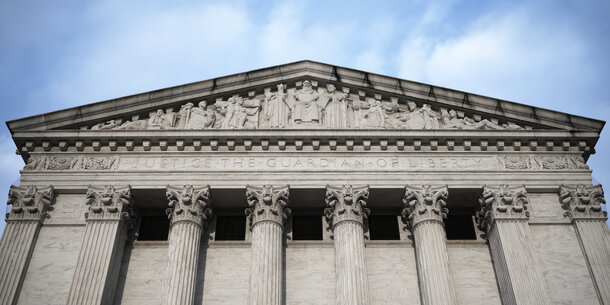The Supreme Court delivered a surprise last Thursday to many of us in the voting rights and redistricting communities with its decision in Allen v. Milligan, which affirmed that the Voting Rights Act remains an active tool for civil rights enforcement. The law has been described at times as super-legislation because of its bipartisan pedigree and its effectiveness in bringing long-awaited, fundamental change for voters of color in our political system. Despite the Court’s recent rulings showing decided hostility to other federal tools to protect equal representation — by effectively ending the special oversight provisions of the Voting Rights Act and by refusing to regulate partisan gerrymandering — Milligan cut against the grain. The Court found that the State of Alabama had violated federal law by underrepresenting Black voters in its 2021 congressional district map.
Black voters are about a quarter of Alabama’s voting age population, and a straightforward application of Section 2 (which guarantees voters an equal opportunity to elect candidates of choice) would mean that two of Alabama’s seven districts should reflect that community’s preferences for political candidates. But the state legislature enacted a map with just one of seven districts with a Black majority — the basic configuration the state had also used in 2020. The map illustrates a classic case of “vote dilution,” in which a community’s ability to use political power is limited due to district lines.
The above is not simply a statement of the governing law — it’s an assessment based on my personal experience. I am a native of Montgomery, a member of Alabama’s bar, and I served as counsel to the Democrats in the legislature through Alabama’s two most recent redrawing efforts. (The last time was to remedy a different constitutional violation back in 2017.) This time around, the Republican supermajority insisted that they understood the law and even invited lawsuits to test the matter, perhaps believing the Roberts Court would extend its pattern of cutting back on voting rights enforcement.
But siding with Black voters who challenged this map, the Court ordered that a second district was justified in light of the size of the Black population and the prolonged patterns of racially polarized voting in the state. The surprising part of this decision was the Court’s strong embrace of the history behind Congress’s passage of Section 2 along with four decades of well-established judicial interpretation of the law.
The Roberts Court appeared poised to issue a final blow to what was left of the Voting Rights Act, yet this decision represents the Supreme Court’s first formal endorsement of a vote dilution claim since 2006. While this decision means that Alabama and other states in the Black Belt (Louisiana and Georgia have analogous pending cases) will soon be drawing new district maps to improve representational opportunities for Black voters, this welcome news is also tempered by two stark realities.
First, Black voters will have endured a full congressional term waiting on the Court to finally strike down a patently illegal map — because of the Court’s use of the “shadow docket,” they had to vote in illegal districts that they knew were underrepresenting them. The second point is just as sobering. Section 2 remains on the books, but the provision emerges in a severely weakened state — and not out of danger. Over the last 10 years, the Roberts Court has taken a newly renewed Voting Rights Act that was on the march and left it an anemic tool whose future carries uncertainty. For example, a pending case about whether civil rights advocates have a right to sue under Section 2 threatens to rob Black voters of pursuing claims on their own.
But for now, a win is a win, and there is good reason to celebrate the promise of improved political representation for communities in the Deep South, where the need for federal protection is most pronounced.






